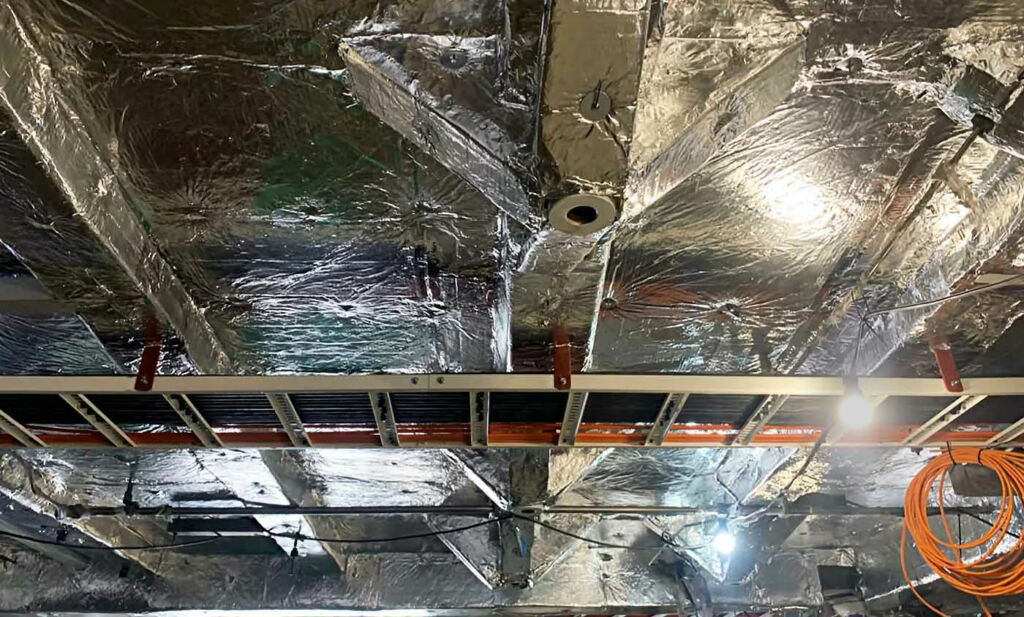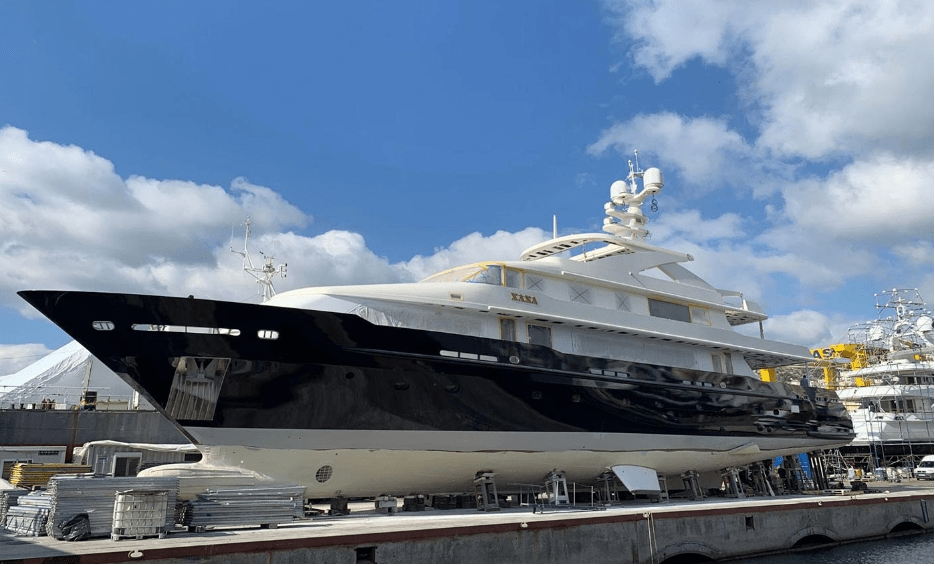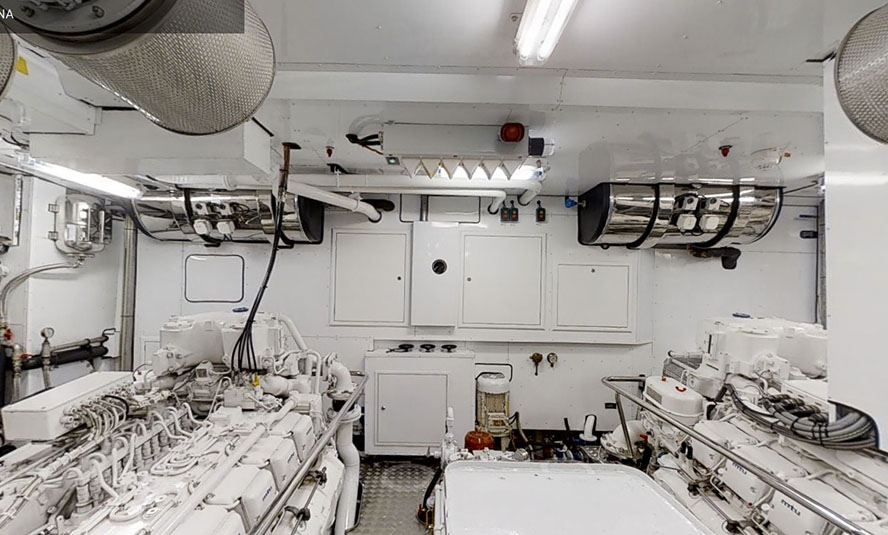Stone wool: Properties & benefits in marine insulation

Stone wool is a material widely used in ship insulation. Thanks to its properties, it is a material that covers all needs for comfort insulation (sound insulation, thermal insulation, fire protection) in ships and yachts.
Let’s look at stone wool and its applications more analytically:
- Stone wool – what is it and where is it used?
- Properties of stone wool
- Comparison of stone wool with other insulating materials
Stone wool – what is it and where is it used?
Stone wool is a material composed of silicon oxide and aluminum fibers. It is produced by melting rocks at an extremely high temperature, finally taking the form of fibers with a diameter of 6-20 µm. It is used for building and technical applications, but also for insulation in shipbuilding. It is suitable for thermal and acoustic insulation, as well as fire protection. In order for this product to be manufactured, raw materials (rocks) are used in conjunction with other recycled materials.
Stone wool is used to insulate buildings, but has found great application in marine insulation and in industries as well. Stone wool is produced in various thicknesses and in various qualities, depending on the requirements of each application and is an environmentally friendly material.
Due to its structure, it prevents the reflection of sound, being an effective soundproofing material, in addition to its thermal insulating properties.

These properties make it a frequent choice in shipbuilding, since it is non-combustible and soundproof, while mold does not grow easily in the presence of stone wool. Its mechanical properties remain unchanged even at high temperatures, while it does not attract rodents and other animals. It also has many applications in the sound insulation of floating floors, bulkheads, engine rooms, etc.
Properties of stone wool – thermal insulation, acoustic insulation, fire protection
Stone wool has specific technical characteristics that make it an ideal choice for insulation work on vessels. Some frequently asked questions about the properties of stone wool are:
- Does stone wool burn?
- Does stone wool smell?
- How is stone wool cut?
To begin with, stone wool does not burn, but melts when it comes into contact with fire or incandescent objects. This property is an important reason to choose it for insulation and fire protection on a vessel.
Stone wool does not smell unless it is overheated and melted. Although there are cases of malfunctioning of fireplaces, where incidents of unpleasant odors have been reported, on vessels there is no such possibility, since in order for the stone wool to melt, a fire would have to occur on board.
Finally, to answer the last question about how stone wool is cut, special professional equipment is usually used, which is available from companies specializing in marine insulation, such as Alkyonis.

First of all, measurements are taken of the area where the stone wool will be applied. Before the cutting process is started, it is important that the crew wears all necessary protective equipment, such as special gloves, uniform and masks to protect against the microparticles that are released as the material is cut.
Comparison of stone wool with other insulating materials
Stone wool or Styrofoam (polystyrene)?
Polystyrene, or Styrofoam, is a relatively rigid insulating material that retains its volume and is often used in external insulation of buildings and roofs.
Stone wool, on the other hand, is flexible and its big advantage over Styrofoam is its non-combustible properties and the fact that it does not produce smoke and toxic gases when it overheats. It is not attacked by insects, rodents and fungi and is not affected by the sun. Therefore, it provides excellent thermal insulation, sound insulation and fire protection to vessels.
Stone wool or mineral wool?
These two materials show several similarities and are equally used in ship insulation. Stone wool however, has greater resistance to temperature increase, since the material does not degrade up to 1000 degrees Celsius. Mineral wool withstands up to about 240 degrees.
This property of stone wool protects structures from collapsing in case of fire and helps us to extend the evacuation time of the vessel. So, it is a material that gives the vessel greater safety for passengers and crew.
Also, stone wool has a higher mechanical strength than mineral wool, which means it is a better choice for insulating vessel floors and surfaces that absorb vertical forces in general.
Glass wool or stone wool?
Glass wool has similar properties to stone wool. Its composition includes inorganic materials that form fibers, which in turn trap air within the material and offer heat and sound insulation.
While stone wool is used in structural parts of the vessel, glass wool is mainly used to insulate mechanical parts. At Alkyonis we use mainly stone wool to insulate structural as well as mechanical parts, while in combination with the innovative Mascoat Sound Control dB material we apply insulation on engine room area.
Stone wool or ceramic wool?
Ceramic wool is also a fibrous non-combustible material with excellent resistance to very high temperatures, just like stone wool. It is made of refractory ceramic fibers and has excellent thermal insulation performance, chemical resistance, elasticity and durability. It can and maintains its strength, flexibility and thermal properties in various environments, without producing fumes or smoke in the event of a fire.
The only substantial difference between the two materials is in the price and the maximum material resistance temperature, which for stone wool is 1000 degrees while for ceramic wool it is 1200 degrees.
Table of material properties for ship insulation
| Properties | Stone wool | Styrofoam | Mineral wool | Glass wool | Ceramic wool |
|---|---|---|---|---|---|
| Chemical composition | Silicon-aluminum oxide | Expanded polystyrene | Silicon dioxide, soda ash and dolomite | Silicon dioxide, dolomite, limestone, soda ash and alumina | Silicon and alumina oxide (polycrystalline oxides) |
| Coefficient of thermal conductivity | 0,035 – 0,041 W/mK | 0,03 – 0,038 W/mK | 0,037 W/mK | 0,031 – 0,034 W/mK | 0,03 – 0,034 W/mK |
| Material melting temperature | >1000 ° C | 100 ° C | 240 ° C | >1200 ° C | >1600° C |
| Acoustic insulation | high | high | high | high | high |
| Material flexibility | high | low | high | high | high |
| Cost per square meter | medium | low | medium | medium | high |
| Applications | Ship bulkhead, floors, ceilings, hull, doors | Building insulations | Ship bulkhead, floors, ceilings, hull, doors | Surfaces of accommodation areas | Piping, exhausts, engine room |
The price of stone wool combined with its properties makes it an ideal choice for reasonable cost and effective thermal insulation, sound insulation and fire protection.
At Alkyonis we always work with the best choice of insulation material for your boat. Not all materials can be applied everywhere. Contact us to discuss options for your vessel’s insulation. Our experts will assess the needs for sound insulation, thermal insulation, waterproofing and fire protection of your vessel and will prepare an effective material cost-performance quotation for you.
Follow us on Facebook and LinkedIn to check our news and stay up to date on insulation solutions and insulating materials.





